Welcome to one of the most active flamenco sites on the Internet. Guests can read most posts but if you want to participate click here to register.
This site is dedicated to the memory of Paco de Lucía, Ron Mitchell, Guy Williams, Linda Elvira, Philip John Lee, Craig Eros, Ben Woods, David Serva and Tom Blackshear who went ahead of us.
We receive 12,200 visitors a month from 200 countries and 1.7 million page impressions a year. To advertise on this site please contact us.
|

|
|
How to learn new chords?
|
You are logged in as Guest
|
|
Users viewing this topic: none
|
|
Login  | |
|

   
Ricardo
Posts: 14833
Joined: Dec. 14 2004
From: Washington DC

|
 RE: How to learn new chords? (in reply to Francisco) RE: How to learn new chords? (in reply to Francisco)
|
|
|
quote:
ORIGINAL: Francisco
I mean does it apply to all palos?
No, the ones that are "modal" seem to use that progression. Truely, it is a disguised normal cycle of 5ths progression, that seems to end on the V of a minor key. For example:
Am (dm) G (C) F (bm7b5) E.....There is your iv III II I. But modal really means you only need to have that last chord, E, and the related scale, no real chord "progression". So it is a tricky thing for music theory. In the minor key it is i, VII, VI, V, sounds exactly the same. So how to make that V in minor, really sound like the "I" of the phrygian mode is the point of the whole thing, and the challenge for the western listener to accept. Fandangos modulates to relative major, so that is an important palo to study to understand this modal concept.
So simply put, it is good to think of some flamenco palos as "tonal" meaning they resolve V-I or V-i in minor, and other palos as "modal" or having the phrygian sound.
Modal palos:
Martinete, Siguiriyas, Solea, Solxbul, bulerias, Tientos, Tangos, jaleos.
Tonal palos, major:
Cantiñas, bulerias de cadiz, Guajira, Colombiana, Garrotin, etc
Tonal palos, minor:
Farruca, peteneras, Tangos de malaga,
Some party songs will slip in and out of modal and tonal type harmonies depending on the specific melody, like Rumba, bulerias, Tanguillo, Tangos, and sevillanas. And of course tonal songs, cuple, canciones, boleros, even Rancheras, can be interpreted with flamenco compas, yet the palo name is used.
Fandangos are in a special category that I call a "hybrid". They start and end "modal" but the copla, the main verse calls in very tonal harmony, usually relative major. (In Ephrygian, that means the copla is in C major, with IV-V-I changes). That includes, ALL the fandangos, and there are so many. Malagueñas, Granaina, Taranto and all the cantes de la mina, etc.
Also in they hybrid category you have the mountain cantes like Caña, Polo, Serrana, Verdiales and Rondeñas etc etc, all make liberal use of the relative major, but ultimately end up being "modal".
So, all that complex info ends up being pretty simple from the point of view of accompaniment, once you learn how the songs go. 
_____________________________
CD's and transcriptions available here:
www.ricardomarlow.com
|
|
|
|
REPORT THIS POST AS INAPPROPRIATE |
Date Sep. 18 2008 1:48:36
 |
|

  
XXX
Posts: 4400
Joined: Apr. 14 2005

|
 RE: How to learn new chords? (in reply to Güiro) RE: How to learn new chords? (in reply to Güiro)
|
|
|
quote:
ORIGINAL: Ricardo
So, all that complex info ends up being pretty simple from the point of view of accompaniment, once you learn how the songs go. 
hehe, maybe youre right from a flamenco standpoint ricardo. cante determines palo. but i had the impression, that the thread starter could also have asked for some general info on how to approach and understand new chords, or on a more basic level how to understand chords at all?
the structure of a song, in which parts the chords changes etc. are determined by the cante. its very crucial to learn this, no question. you always have to have the leading melody in head. but to get the ear and knowledge to understand whats going on, or even to also use other chords than just the "usual" ones, which maybe even dont find in a cante context, i think this systematical stuff helps. i know very little of it, and it already helped me, because i feel harmonically more "safe" (also in an accompainment situation, which happens too rarely though), because i know more chords and how they interact each other.
_____________________________
Фламенко
|
|
|
|
REPORT THIS POST AS INAPPROPRIATE |
Date Sep. 18 2008 2:17:51
 |
|

   
Mark2
Posts: 1872
Joined: Jul. 12 2004
From: San Francisco

|
 RE: How to learn new chords? (in reply to Güiro) RE: How to learn new chords? (in reply to Güiro)
|
|
|
If you want to learn new chords, you have a few options. You could buy a book full of chords, such as Ted Greene's or you could listen to flamenco cd's and try to pick out the inversions that the guitarists are using. This latter seems to me to be a better way to sound "flamenco"
Both of those methods would pay dividends. But I think it's also essential for every serious musician to know chord construction, which involves learning a bit of theory. If you understand that a major chord is made up of the root, major 3rd, and 5th of a major scale, then you can configure hundreds of major chord inversions all over the neck. There aren't that many chord types, and the formulas for each can easily be found on the net. Then you could simply construct chord inversions of your liking and write them down on a blank chord diagram, or even better, commit your favorites to memory. You'll always be able to come up with a version of a chord that works for your hands in a particular situation, and you'll never be at a loss for how to play a certain chord.
|
|
|
|
REPORT THIS POST AS INAPPROPRIATE |
Date Sep. 19 2008 9:07:21
 |
|

   
NormanKliman
Posts: 1143
Joined: Sep. 1 2007

|
 RE: How to learn new chords? (in reply to Güiro) RE: How to learn new chords? (in reply to Güiro)
|
|
|
Very important to be familiar with "flamenco chords" as Mark2 mentioned, especially if you want to play other people's material. Learning falsetas depends greatly on realizing what chord shape forms the "foundation" for the idea.
quote:
? Should I figure out chords that I have been playing that I can't name?
Yes, but if you realize that you're lacking in knowledge, you should learn basic theory.
Aside from memorizing all the new chords, you should also think about chord inversions (as Deniz and Mark2 have said) to see how chords relate to each other. Inversions are ways to play the same chord with a different arrangement of the same notes (a different chord shape). For example, look at this inversion of an E major chord:
--0---
--5---
--4---
--6---
--7---
--0---
It's pretty easy to see that it's just a C-major chord shape (inversion) moved up the fretboard to E. But look at this G7 inversion:
------
--6---
--7---
--5---
--5---
--7---
It might not be so obvious that this is just a D7 moved up the fretboard. Here's the D7 chord, just in case the information is useful:
------
--1---
--2---
--0---
--0---
--2---
"Inversion" doesn't have to mean sliding a chord up the fretboard; it just means a different arrangement of the same notes or their octave equivalents.
So, if this is new for you, I think you should do two things: (1) look for ways to use familiar chord shapes to make new chords (you can make E major inversions with C, A and G chord shapes, for example) and (2) use this same idea "the other way around" to analyze new chords that you come across in order to find some kind of familiar chord shape within them.
It's definitely worth the trouble to learn about basic music theory, as Deniz has mentioned, and the list of chords that Ricardo and others have put together is really useful.
If you keep playing long enough, you'll start to recognize the color of a seventh chord or whatever (four or more different notes) as opposed to simple major or minor chords (only three different notes), which is very important in determining the chord shape that a falseta is based on.
Hope this helps!
_____________________________
Be here now.
|
|
|
|
REPORT THIS POST AS INAPPROPRIATE |
Date Sep. 20 2008 1:36:47
 |
|
 New Messages New Messages |
 No New Messages No New Messages |
 Hot Topic w/ New Messages Hot Topic w/ New Messages |
 Hot Topic w/o New Messages Hot Topic w/o New Messages |
 Locked w/ New Messages Locked w/ New Messages |
 Locked w/o New Messages Locked w/o New Messages |
|
 Post New Thread
Post New Thread
 Reply to Message
Reply to Message
 Post New Poll
Post New Poll
 Submit Vote
Submit Vote
 Delete My Own Post
Delete My Own Post
 Delete My Own Thread
Delete My Own Thread
 Rate Posts
Rate Posts
|
|
|
Forum Software powered by ASP Playground Advanced Edition 2.0.5
Copyright © 2000 - 2003 ASPPlayground.NET |
0.078125 secs.
|


 Printable Version
Printable Version



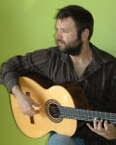


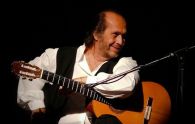


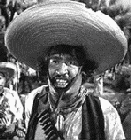
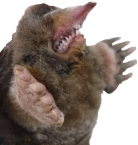
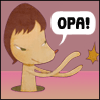
 New Messages
New Messages No New Messages
No New Messages Hot Topic w/ New Messages
Hot Topic w/ New Messages Hot Topic w/o New Messages
Hot Topic w/o New Messages Locked w/ New Messages
Locked w/ New Messages Locked w/o New Messages
Locked w/o New Messages Post New Thread
Post New Thread